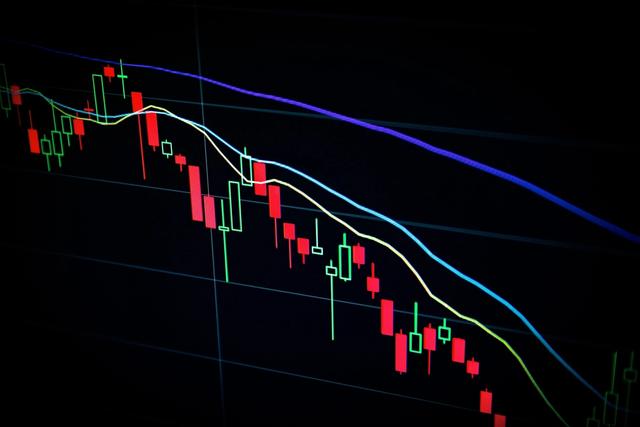Foreign Exchange Risk Management & Risk Mitigation Techniques
Multinational companies, import-export businesses, investors, and individuals making international transactions face foreign exchange rate risk. Exchange rate fluctuations are a daily occurrence. As the value of major currencies fluctuate against each other, it creates income uncertainties for anyone doing cross-border transactions.
For instance, a company's income statement can drop into the red based on a single exchange rate movement. Thus, there is a need to mitigate this risk through efficient exchange rate risk management strategies.
Looking for ways to mitigate foreign exchange risk? Read on as we’ll take a deep dive into foreign exchange risk management and mitigation strategies.
So, What Is Foreign Exchange Risk Management?
The most basic way to reduce currency risk is investing or buying and selling only in your local currency. However, how sustainable is this approach? You run the risk of:
- Losing customers to competitors that offer currency flexibility.
- Losing suppliers that aren’t willing to receive payments in a foreign currency.
- Losing out on some great investment opportunities in overseas and emerging markets.
You need to test different methods to minimise the risks as much as possible. Regardless of how you choose to do it, find a money transfer service such as Clear Treasury that can easily and quickly meet all your cross-border transfer needs.
Understanding Foreign Exchange Risk
When a country's currency depreciates in relation to other currencies, its goods and services become cheap for foreign buyers, and the opposite is also true.
Unless exchange rates are fixed in relation to one another, many entities will have to deal with exchange rate risk, which typically shows itself in three main ways:

Become A Client
Sign up for an account today and get access to our fast and secure online payments platform, and find out more about FX tools to mitigate currency risk, including forward contracts and stop losses.
1. Forecast risk
Forecast risk, also known as economic risk, arises when unavoidable exposure to currency fluctuations adversely impacts a company's market value.
For example, changes in the macroeconomic conditions, including political stability, government regulations or exchange rates, can lead to changes in the relative prices of inputs and outputs.
The relative changes in price can adversely affect a company's market share, future cash flows and value in the long run.
2. Transactional risk
Transactional exposure is the risk that the exchange rate will change between the date you make the agreement and subsequent transaction dates when you settle the deal.
The rate on the date you agreed might differ significantly from the settlement rate. For instance, say you sell shares in a foreign stock exchange on date X. When you receive your funds a few days later, you may get much less than anticipated if the exchange rate moves adversely.
3. Translation risk
This risk affects companies headquartered domestically but with subsidiaries in foreign jurisdictions. Translation risk, also known as accounting risk, occurs when the subsidiary's financial statements, such as the balance sheet, must be consolidated into the parent company's financial statements.
If the exchange rate fluctuates, it impacts the performance of a subsidiary. The translation risk will be higher if the parent company holds a significant portion of its assets, liabilities or equities in a foreign currency.
How to Mitigate Foreign Exchange Risk
The first step is to determine the primary objective of your foreign exchange risk management.
For some, it is to reduce the risk while making moves to benefit from the arbitrage and economic opportunities arising from exchange rate movements.
For others, it is to protect themselves from the adverse impact of exchange rate fluctuations.
Once you get a handle on the ‘why,’ you can develop the right policy based on suitable strategies to manage your foreign exchange risks.
To understand why you need foreign exchange risk management:
- Identify and quantify the risks to determine the magnitude of exposure you face.
- Formulate a policy based on your objectives.
- Determine the appropriate exchange risk management strategies to use.
- Implement and execute your strategy.
- Regularly monitor if it’s working and revise if you need to.
Quarterly Currency Outlook
Foreign Exchange Risk Management Strategies
Here are some strategies you can use.
1. Forward contracts
A forward contract is a foreign exchange agreement where you lock in the exchange rate of a future foreign currency payment today.
It allows entities to protect themselves from exchange rate movements by entering into a contract with a third party such as a reputable international payment provider like Clear Treasury.
Strategy tips
- Calculate the cost or benefit of buying forward when you purchase. The benefits should outweigh what you pay for signing the contract.
- For major trading currencies, such as the US dollar or euro, the contract can be up to 10 years forward.
2. Invoicing in the local currency
One of the easiest ways to hedge against the exchange rate risk is receiving and making payments in your local currency.
This strategy does not do away with the risk. Instead, it passes it on to your customer or suppliers, an unrealistic approach in a competitive environment.
In a Nutshell
- Foreign exchange risk is part and parcel of doing international business or investing in other countries.
- Currency fluctuation may adversely impact your operations and investments, leading to income uncertainty and losses.
- Types of foreign exchange risks include economic, transactional, and translation.
- External foreign exchange risk mitigation strategies for hedging against transactional risks include forward contracts, currency futures, currency options, and currency swaps.
- Internal foreign exchange risk mitigation strategies that you can implement include invoicing in local currency, netting, matching, and leading and lagging.

Get Expert Exchange Rate Risk Management Help
Getting rid of uncertainty brought about by exchange rate volatility or taking advantage of these fluctuations’ opportunities can be highly complex and time-consuming.
Don't hesitate to get help and expert advice. Turn to Clear Treasury today to get access to:
- A dedicated online platform
- A guaranteed competitive exchange rate
- Smooth transactions and lower exchange complexities
- Advice on how to handle exchange rate risk management
- Cost-effective transfer processing
Focus on your business or investments and let Clear Treasury handle complicated exchange rate issues for you.
Related Articles
Daily Analysis: GBP/USD Hits 14-Month Lows Amid Severe Economic Uncertainty
Our daily analysis of EUR, GBP and USD.
Read more
Weekly Round-Up & The Week Ahead
Our weekly round-up and a look at the week ahead for EUR, GBP and USD.
Read more
The Rise of B2B Cross-Border Payments
Businesses that wish to protect their overseas markets or expand their international trade, must innovate their payments processes internally, or in concert with a technologically advanced fintech provider. Read on to discover more about the rise of cross-border B2B payments and what your business needs to do to stay ahead.
Read more


